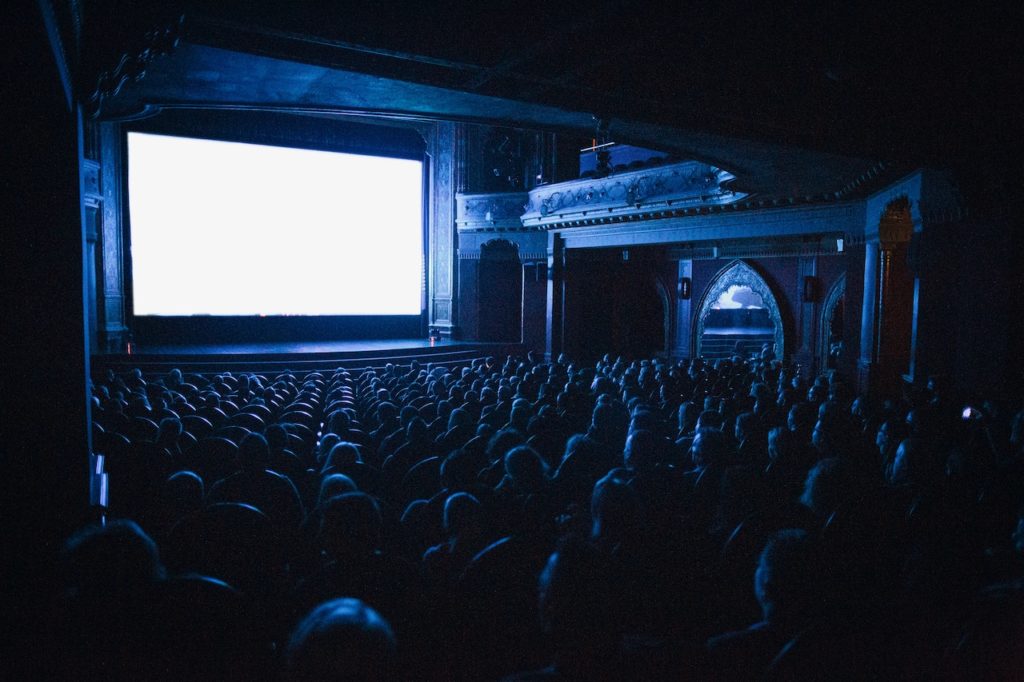M+E Connections

Sundance: Indie Film Folks Show Their Best
Story Highlights
Despite two years of uncertainty, creatives held their breath, crossed their fingers, and hoped the in-person gatherings at the Sundance Film Festival would set the stage for the rejuvenation of the independent film industry.
Sure, movie theater audiences have continued their slow, painful decline; studios have consolidated focusing their attention on tentpole and superhero (expensive) productions, but the creative industry needs film festivals to give talent the attention and exposure it needs and deserves.
Big budget projects like Top Gun: Maverick, Black Panther: Wakanda Forever and Avatar: The Way of Water showed that people need to gather in dark rooms to experience content together.
At the same time, streaming giants — despite what Wall Street says — have shown that people like a wide range of content themes from horror to comedy to drama to sci-fi and documentaries that tell the stories behind the stories.
These were the kinds of projects Robert Redford and a few close friends wanted to give an opportunity to be seen on a national and perhaps even global platform.
 Film festivals like Sundance have become the place where independent filmmakers get their work seen and acquired for even broader viewing. A longtime friend and early collaborator with Redford, Cirina Catania, CEO/founder of Catania Studios and executive director of High School Media Collective, noted that Sundance has increasingly become the place where new, exciting films get seen and more importantly bought for even broader audience exposure.
Film festivals like Sundance have become the place where independent filmmakers get their work seen and acquired for even broader viewing. A longtime friend and early collaborator with Redford, Cirina Catania, CEO/founder of Catania Studios and executive director of High School Media Collective, noted that Sundance has increasingly become the place where new, exciting films get seen and more importantly bought for even broader audience exposure.
Sundance 2023 proved people were ready to get the business back on its feet as thousands of folks tramped through the snow to watch good, mediocre films along with outstanding creative efforts that focused on major issues people face as well as work that was just plain fun to watch.
This year’s Sundance was again a pre-eminent showcase for off-Hollywood movies that were unique, special projects that still had strong commercial potential.
In other words, despite the brief hiatus of the in-person get together Sundance still was the right combination of art, money, vision, and hustle. This year’s Sundance was brimming with fine, good, and very good movies but theatrical distributors sat quietly on the sidelines while streamers cherrypicked the offerings.
Some will be scheduled for your local theater over the next 12 months but increasingly most will be available on one of your streaming platforms.
Even though most of the specialty distributors including Focus Features, Searchlight, A24, Magnolia, Neon and Roadside Attractions indicated that most of their 2023 schedules were full they were still willing to consider opening their checkbooks if there were some buzzy crowd-pleasing surprises during the festival (there were a few) but most of them were stingier than Scrooge McDuck.
For most of the Sundance hopefuls Netflix, Amazon, Apple were the big streamers who were willing to pay big even though their selections were limited.
All the buyers simply attended the shows in the theaters around town to gauge audience interest and maybe sanity check their opinions on the projects being offered. But even streamers are interested in having a theatrical window opened … a little. It not only qualifies them for Oscar submissions, but more importantly theatrical previews/reviews and attendee social media coverage add to the overall value of the project.
This year’s Sundance included 111 features and 64 shorts, selected from 15,856 submissions. Nearly half the films at the festival were made by first-time filmmakers including a record number of works by indigenous filmmakers and projects from 28 countries.
Just a few of the over 80 films that were available when Sundance opened had found homes.
These include Chloe Domont’s thriller Fair Play that went for about $20 million to Netflix. Apple paid about the same for John Carney’s Flora and Son while Searchlight captured the improv comedy Theater Camp for $8 million. Mubi picked up Ira Sachs’ drama, Passages, A24 acquired the buzzy Midnight title Talk to Me and MTV Documentary, Films walked away with Maite Alberdi’s documentary grand prize winner The Eternal Memory.
For decades films were valued by simple metrics, past consumer interest. Action films are still the dominant genre when it comes to overall box office revenue, but they require high production and marketing budgets.
But in recent years Parrot Analytics studies have shown that horror films have produced a greater profit compared to their production budgets.
The internet’s penetration changed some of those initial calculations and streaming changed it even more violently.
Today a title that attracts new subscribers is valuable and more so if it keeps them from cancelling or if it reaches a demographic they have been struggling to reach.
 To predict and understand the demand, streamers have come to rely on Parrot Analytics’ content valuation measurement system. The goal is to understand how demand for a title can be translated/monetized by the content provider and buyer at various stages of the production cycle as well as its value to the organizations content library.
To predict and understand the demand, streamers have come to rely on Parrot Analytics’ content valuation measurement system. The goal is to understand how demand for a title can be translated/monetized by the content provider and buyer at various stages of the production cycle as well as its value to the organizations content library.
Translation? It takes a lot of the gut-level decisions out of the equation, so the apparently arbitrary additions and deletions aren’t as arbitrary as you thought.
While dramas have slowly declined when it comes to box office returns, they have proven to be valuable to streamers. As a result, there have been several co-financing projects with film distributors and SVOD partners so that both end up with a better return on investment.
Most dramas earn between $1-5 in streaming value a year per every dollar they make at the box office. In addition, streaming demand increases slightly as people look for a wider array of films. The same goes for thrillers, which sees up to $8 per every $1 at the box office.
Sundance broke the mold — slowly — for documentaries which were previously treated as entertainment charity cases.
Agents weren’t interested, unions weren’t interested, distributors were even less interested, and they were treated as pet projects that were nearly always independently financed through a patchwork of grants, funds and personal capital, meaning they often took years to complete.
Sundance was the first major festival to give nonfiction work the same footing as work that was targeted for theatrical distribution.
Sundance documentaries have consistently been some of the industry’s best work and this year was no exception.
Still follows Michael J. Fox in his meteoric rise to stardom and how his life was altered by his Parkinson’s diagnosis at age 29. It’s billed as a playful, humorous account and eternal optimism.
Underrated is the key reason my wife would hurt us — bad — if we even said we’re considering dropping Apple TV+. It’s a documentary about Golden State Warriors’ Stephen Curry that explores that he faced as a low-rated, undersized kid a Division I school to become a basketball GOAT and four-time NBA champ.
Pretty Baby is a two-part doc that follows Brooke Shields from her breakout role at 12 and is a revealing and critical documentary of how young, attractive, and talented are so often used, abused and sidelined by industry image makers/breakers.
Judy Blume Forever and Going to Mars: The Nikki Giovanni Project were two career overviews of determined writers covering their event-filled lives, career pauses/triumphs as well as personal milestones and political battles. Bad Press is an eye-opening look at the fight for free press while Victim/Suspect is an investigative look at how women have reported sexual assault only to be arrested and prosecuted. Murder in Big Horn is a Showtime mini-docuseries that explores missing Indigenous women/girls who disappeared from Montana’s Big Horn region.
I Am Everything is a film we’ll watch on CNN after Magnolia completes its global theatrical run. It chronicles rock icon Little Richard and his legacy of Blackness, queerness, faith, and Christianity. We’re pretty sure it will be as captivating/enlightening as Summer of Soul and Get on Up, James Brown’s musical biography.
There were several other intriguing and yet disturbing films we know we should watch like Magazine Dreams and The Stroll if for no other reason than to improve our understanding and appreciation of the people and world around us. But we’ll just have to wait and see where our head is at when they’re released.
And there were many more good/great projects that came to Sundance from folks who had every confidence their film was worth a theatrical release at best or at worst a slot in a streaming service’s library and they will find an audience based on the quality of the total team’s creative work.
Parrot Analytics noted recently that streaming documentaries has increased about 77 percent this past year and consumer demand — social media, peer-to-peer file sharing — has jumped nearly 186 percent. There’s so much good stuff available and sometimes, just sometimes, it’s the marketing budget that gets the audience interested and involved.
 If we’re lucky, maybe studio and streamer management will do more than simply buy the project, drop the film in the theater or put it in the rotation and wait for the audience to fan the flames.
If we’re lucky, maybe studio and streamer management will do more than simply buy the project, drop the film in the theater or put it in the rotation and wait for the audience to fan the flames.
It’s true … it takes a village.
The indie film industry needs to survive and thrive and not even a healthy Sundance can’t do it alone. As Benoit Blanc said in Glass Onion, “I expected complexity. I expected intelligence.
I expected a puzzle, a game. But that’s not what any of this is.”
Perhaps when the Hollywood crowd gets through with their self-congratulatory Oscars popularity party, they can focus on the important stuff … getting seats into seats in the theater and at home.
Sundance just proves there are good stories that need to be told and deserve to be seen.
Now we must figure out how to make them important to an audience that has been spoiled by an overabundance of good content and people who are constantly reaching into their pockets to take more of their money because Wall Street thinks they need a greater return for all their hard work.
Andy Marken [email protected] is an author of more than 700 articles on management, marketing, communications, industry trends in media and entertainment, consumer electronics, software, and applications.









